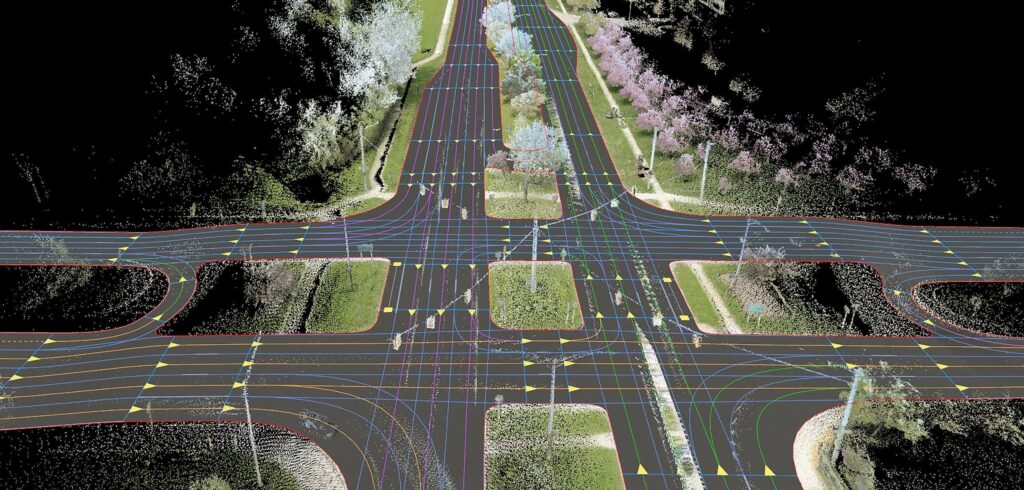Audi says it is taking another step toward safer and more intelligent mobility, through the use of high-precision swarm data to improve its ‘local hazard alerts’ car-to-X service. The new version of the system uses a car-to-cloud application that is based on what Audi says is a novel procedure for estimating tire coefficient of friction on the basis of wheel slip data. The company claims the technology can detect minute changes in road surface adhesion, upload the data to the cloud to be processed, and warn drivers of hazards in near real time.
Since 2017, Audi vehicles have been able to warn each other about accidents, broken-down vehicles, traffic jams, road ice and limited visibility. To do this, the auto maker’s local hazard alert system analyzes various data. This includes interventions of the electronic stabilization control (ESC), rain and light sensors, windshield wipers and headlights, as well as emergency calls and airbag triggering. The system will now use swarm data to make the warning even faster and more precise; Audi states it is the first manufacturer to use a patented solution from Swedish company NIRA Dynamics AB for this purpose. The two companies used this solution as a basis to develop the improved hazard alerts, together with the VW Group’s Car.Software organization and HERE Technologies.
To estimate the coefficient of friction based on wheel slip, the system uses data such as the wheel speed and suspension acceleration values. The sensor data is anonymized, both in the car itself and also in the cloud, hosted by NIRA Dynamics AB, to which it is transmitted. The aggregated data is then combined with metadata such as current weather information and empirical values before being transmitted by a NIRA server to service provider HERE Technologies. There, the data is integrated in the HERE location platform that represents the road network as a three-dimensional model. HERE’s servers send the warning information to those cars that are in or headed toward areas with poor conditions, and their drivers are alerted.
Audi notes that the greater the number of vehicles delivering the data, the better the system can learn, analyze and create maps. This is the basic principle of swarm data and swarm intelligence, an area in which Audi says it has acquired extensive knowledge over the past years. In Europe, more than 1.7 million vehicles from the Volkswagen Group will currently deliver data for the hazard information service in 2021, with this number set to increase to more than three million in 2022.
The Car.Software organization bore the main responsibility for the development, with the project designed in such a way that the greatest possible number of drivers could benefit from the safety advantages regardless of the group brand. “The project for improved hazard alerts is a good example of the great potential of cross-brand software development. Together with other Group brands and our strategic partners, we were able to develop a digital service within a few months while making use of our own software skills and economies of scale,” said Thomas Müller, head of advanced driving assistance systems ADAS and AD at the Car.Software organization. “The improved hazard information service is just the beginning; we see wide-ranging potential for the future.”


